The Crispiest, Ooziest Poached Eggs Come From the Oven
No one can argue against tender, luscious poached eggs (hat tip to brunchy Benedicts) but there’s a certain appeal that comes with crunchy food that most sentient beings can’t resist. From fried chicken to potato chips to even something as basic as crisp lettuce, crunch adds an entirely new sensory element to food that goes beyond mere taste. Since the beginning of time, humans have naturally associated crunch and crispness with freshness. But I think we all can agree that crunchiness simply makes the eating experience a little more fun.
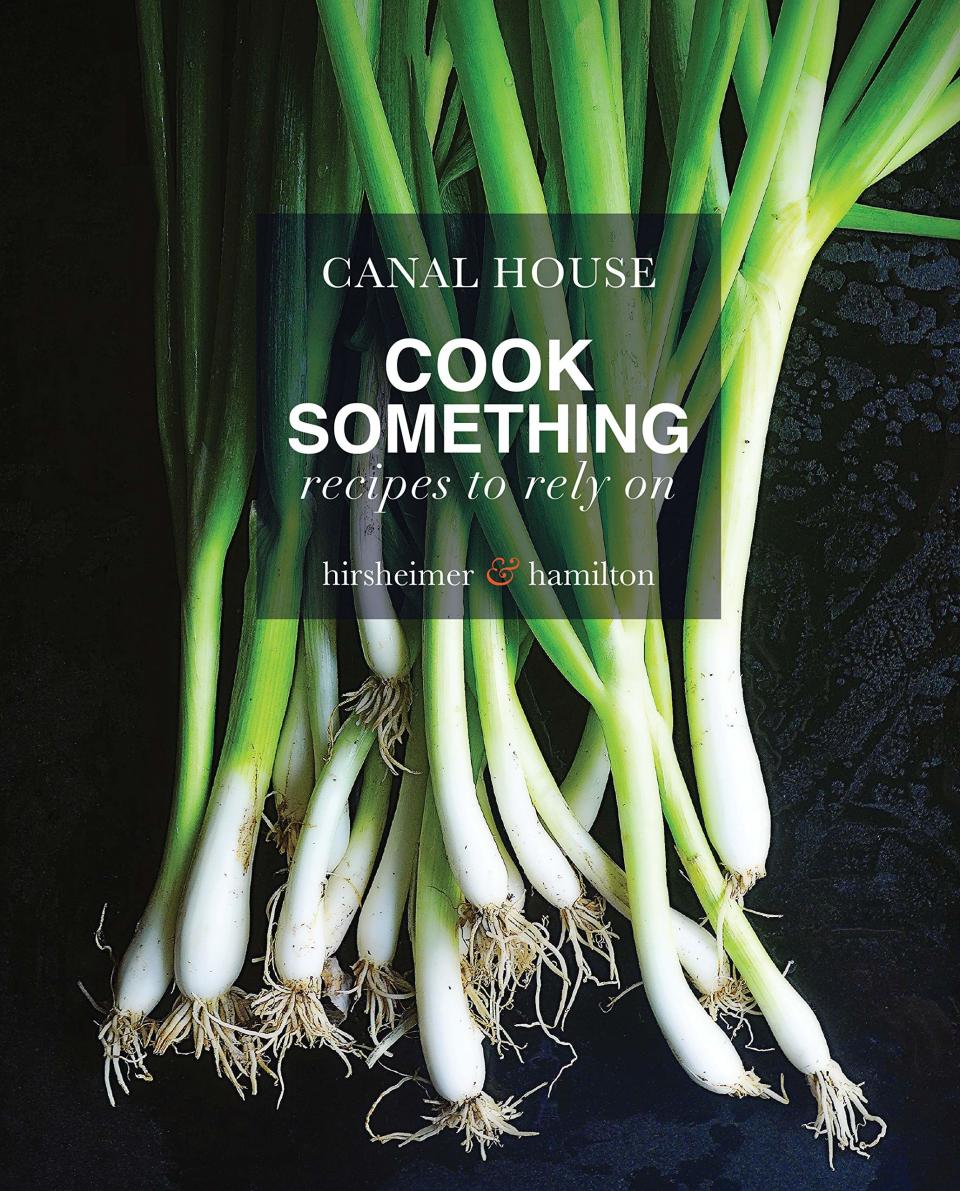
And when you can achieve maximal crispness without frying, I call it a win-win. That’s what the talented women of Canal House have accomplished with their new kind of crispy egg—just one of many brilliant (and brilliantly simple) recipes from their latest book Cook Something: Recipes to Rely On. These crumb-covered poached eggs go beyond fried eggs that are just crisp around the edges (although we're big fans of that technique, as well). These velvety eggs get their crunch not from a trip to the frying pan, but from a generous coating of bacon-y panko breading. Think: next-level eggs on toast, but with the toast actually wrapped around each egg.
It’s their riff on a Scotch egg, the gastropub staple that's typically soft-boiled, then deep-fried. In their version, the egg is gently poached instead, which makes the yolk deliciously runny without you having to deal with the trickiness of peeling a soft-boiled egg. Then, rather than wrapping the poached eggs in a layer of sausage meat like Scotch eggs, Canal House creators Christopher Hirsheimer and Melissa Hamilton coat the eggs with breadcrumbs that have been tossed with pulverized crispy bacon.
“We wanted try it with a poached egg and chop up the meat to make it more fine,” explained Hirsheimer. “The meat isn’t separate from the crumb, it’s part of the crumb.”
Like many people around the world, Hamilton says they’re crazy about breadcrumbs and enjoy using them whenever they can. “We use them in pastas, kale salads—we use them in everything, so it’s just natural for us to use it with eggs,” she said.
But as the duo tested their crumb-covered poached eggs in the kitchen, they learned frying wasn’t the answer to nailing a crisp crust. “Deep-frying didn’t work, because the outsides would get burnt; shallow-frying didn’t well either, because it wasn’t good with the panko and the eggs were difficult to turn over in a skillet,” said Hirsheimer.
How to Poach Eggs Perfectly, Every Time
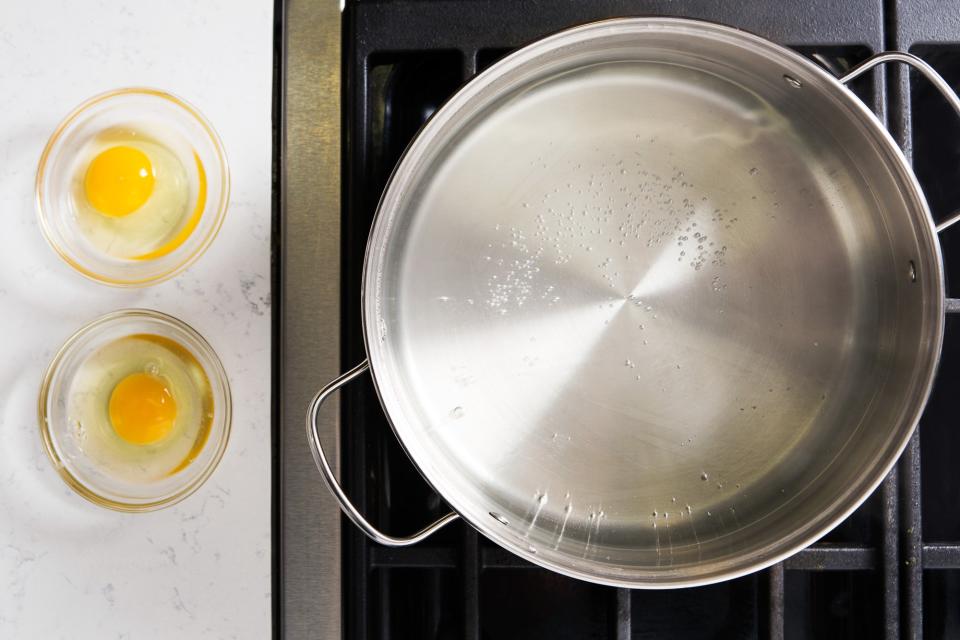
Start Off Right
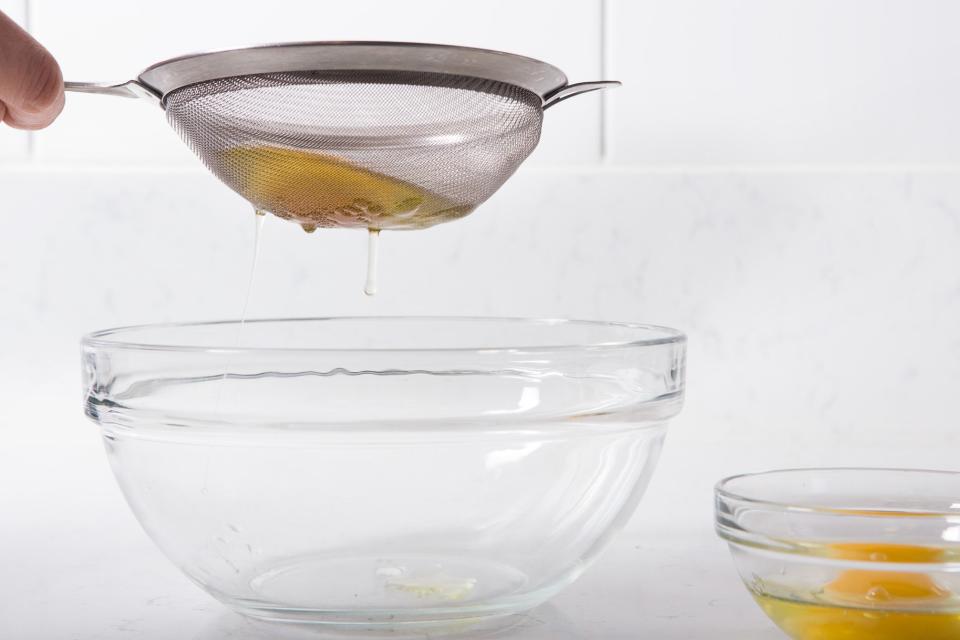
Grab A Strainer
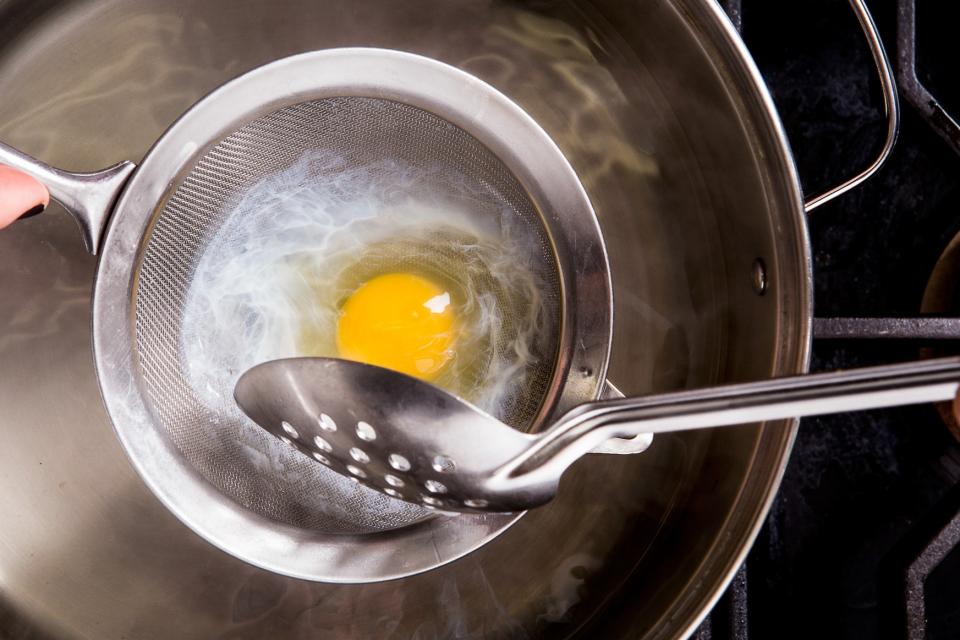
Get Cooking
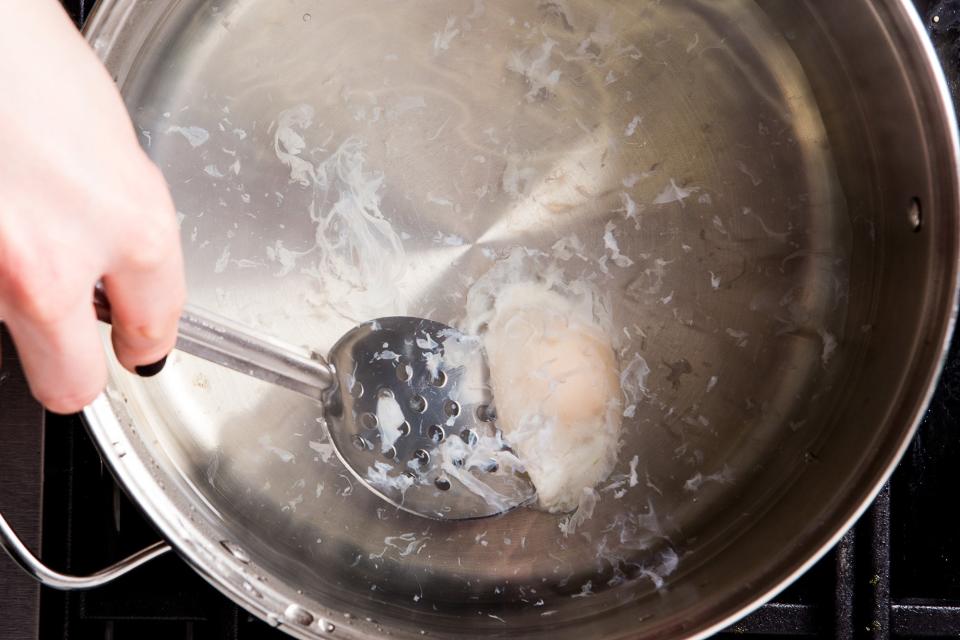
Keep Cooking
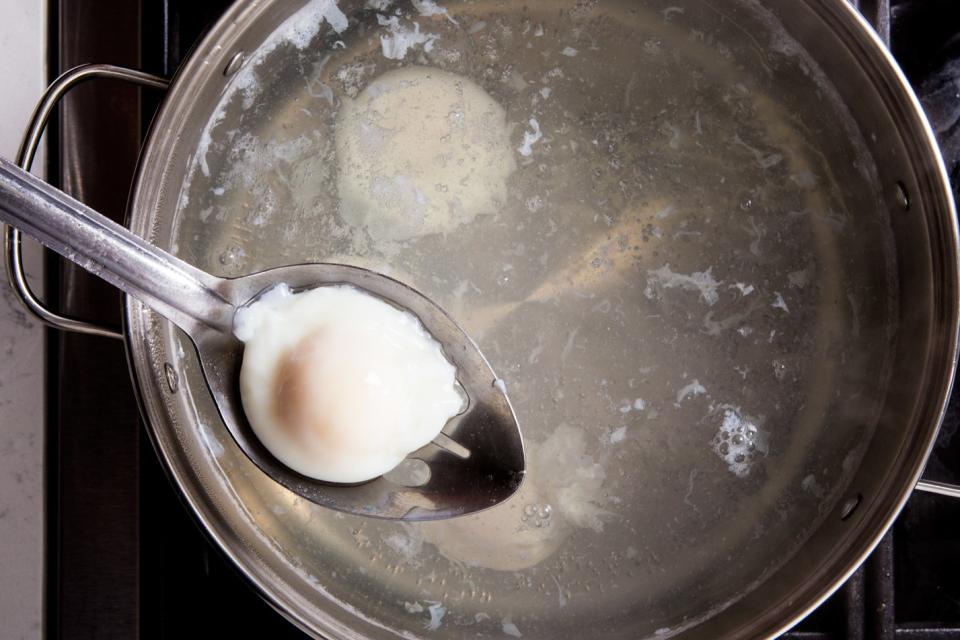
Get It Out
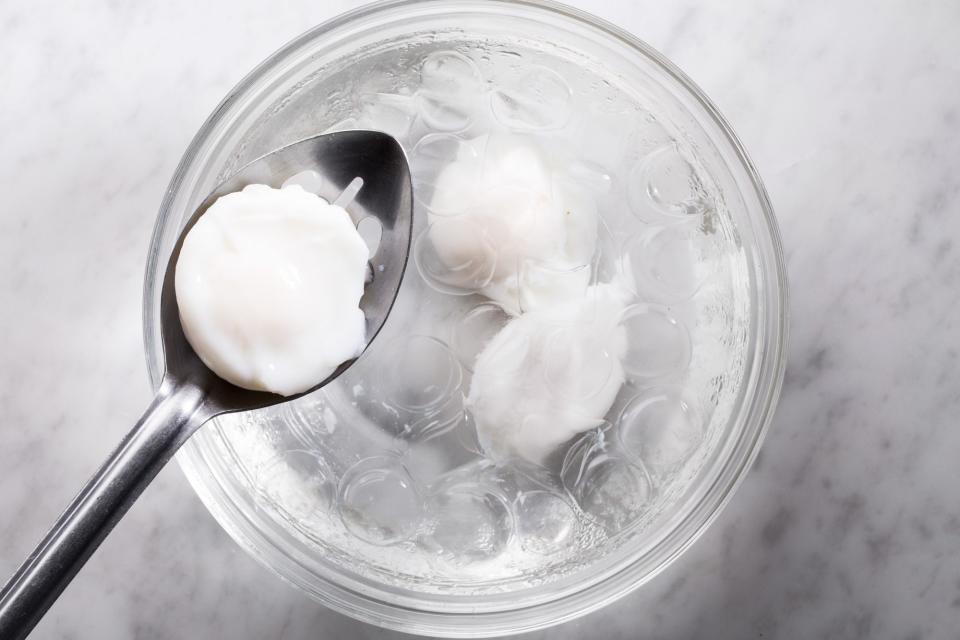
Do It Ahead
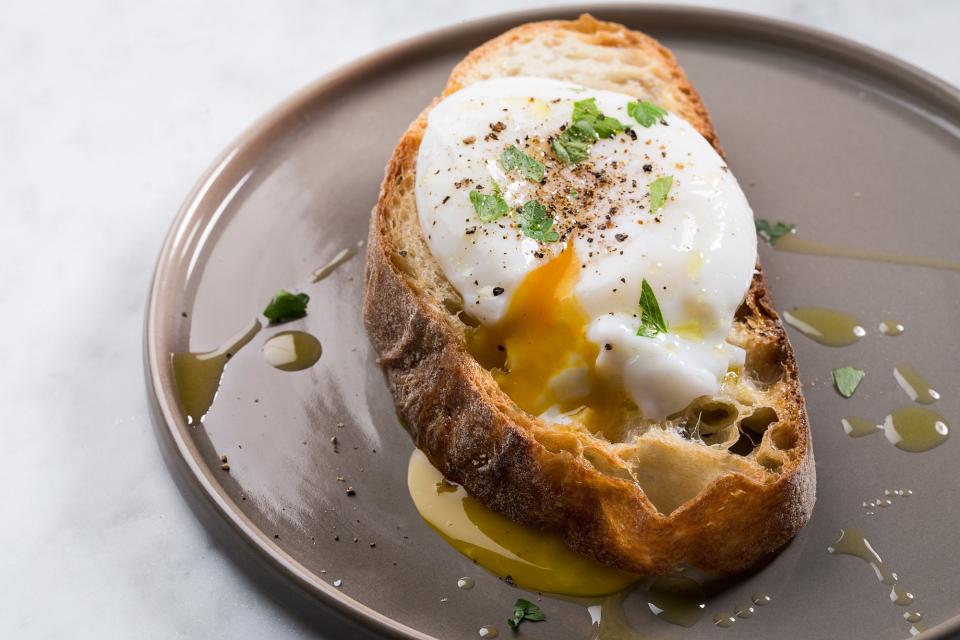
Dig In!
Thankfully, they discovered that the best solution was also the easiest. “The oven perfectly surrounds the egg with heat and browns the exterior,” said Melissa. “The egg gets warmed through, but keeps its runny interior,” said Melissa.
When you cut into these eggs, the crispy crust gives way to the the tender egg inside and the crumbs soak up some of the velvety yolk. “Bacon is basic, but you can’t beat it,” said Hirsheimer. “In this recipe, it’s crisp, but fine—perfectly matching the egg’s delicacy.”
The recipe is simple yet luxurious, and it has everything you could ever want in breakfast (or lunch) (or dinner). It’s buttery, savory, and it’s got the time-honored crunch. If you prefer not to use bacon, Cook Something offers three additional variations of the crumb-covered poached eggs: Pancetta and parmigiano crumbs, tarragon and parsley crumbs, and chorizo crumbs.
As Hamilton and Hirsheimer put it, these eggs are both rustic and sophisticated—and they’re the perfect dish for a crowd. The best part? Everything is made ahead. All you have to do is pop them into the oven to warm them up and get them golden brown just before serving. And no one's stopping you from serving them with even more bread (in the form of toast) alongside for good measure.
Crumb-Covered Poached Eggs
Originally Appeared on Epicurious


